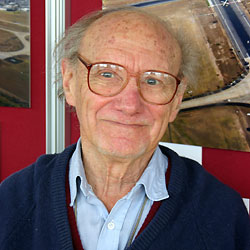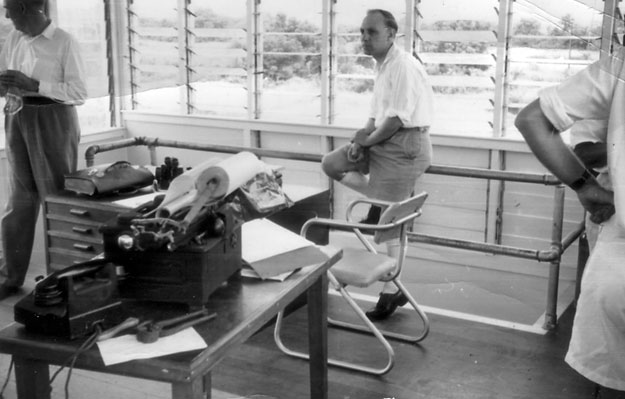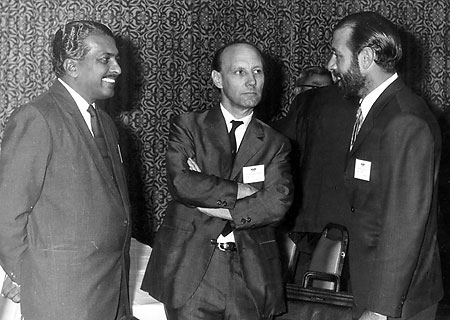
Ron Rye joined DCA in 1945, straight from a degree in Electrical Engineering at Melbourne University. After some years gaining practical experience in radio and telephone engineering matters, including maintenance work in Vic/Tas Region, he returned to Central Office in 1951 and, in 1952, joined the section specialising in High Frequency (HF - "Short Wave") communications to aircraft, and between ground stations.
Left: Ron Rye, photographed in September 2005
The period
from then until his retirement as an Airways Engineer, HF Systems, in
1984 was one of constant change and development as airways expanded and
new technologies were invented and utilised, with many problems to be
investigated and resolved.
When Ron joined in 1945, the only routine communication between DCA ground
stations was by Morse code over HF radio. Land lines were precious, unreliable
and mainly for public use. In the '50s machine telegraph was gradually
introduced, using HF radio, and much development, in which Ron was involved,
was necessary to make it capable of unattended operation. Examples of
such equipment are on display in the Airways Museum (the KY5 frequency
shifter, R25 receiver and Th2 converter).
The R25, placed into service in 1960 was ahead of anything offered from overseas, being fully transistorised and thus much more reliable than valve equipment. Antenna systems were improved, 'remote' (that is, quiet), receiving locations were found to allow for the continually increasing amount of traffic, and to allow introduction of speech comunication on trans-oceanic aircraft. Equipment for noise quieting between speech messages, for automatic error correcting and switching of telegraph messages had only just been developed overseas and had to be adapted to our needs (examples of this are also in the Museum).

Ron
Rye (centre) on a visit to Wewak Tower, Papua, c.1960.
Note the teleprinter on the desk.
Ron worked in a consulting capacity for the Overseas Telecommunications Commission and for the Standards Association of Australia,the latter to do with standards for extremely quiet locations needed mainly for Defence Department communications. Finally, in his last years before retiring in 1984, Ron worked on converting domestic air/ground HF comunications to single-sideband operation, as part of a worldwide move to increase capacity and improve readibility.

After retiring,
Ron kept an interest in the fate of equipment coming out of service and
was one of the original group of Airways Museum volunteers. His
contribution to the Museum has been in utilising his experience in preparing
descriptions of exhibits, and in sorting and categorising the many technical
documents held in the Technical Library. Recent
projects (in 2004 and 2005) were the making of 'Basic Radio Transmitter'
and 'Chinese Magnetite Compass' exhibits.
(Photos: Top-Phil Vabre/CAHS Collection; Centre and Bottom-Ron Rye collection)
Back to the
Airways Museum Volunteers page
Back to the main Departmental People Index
If this page does not have menu bars at top and left, click
here